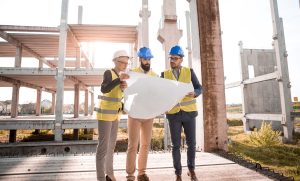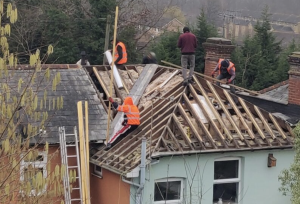HS2 giant bridge sections roll out of Factory (Video)
This post has already been read 1405 times!
This post has already been read 1405 times!
The massive segments each weigh up to 140 tonnes are being made at a purpose-built 100m long factory building that is bigger in internal volume than the Royal Albert Hall, the mega factory ensures the quality, safety and efficiency of the build process .
The construction team, which is a collaboration of Danny Sullivan, VSL, Sendin and Tarmac, will cast and install a total of 1,000 concrete segments, each the size of a double-decker bus.
The segments will be cast at the plant every week using a ‘match-casting’ technique with the maximum volume reaching 12 a week at its peak.
The process will see each segment poured against the previous one as a cast to ensure the whole arch fits perfectly when reassembled on site as the bridge is build with a slight curve as we can see below with segment will be a slightly different shape depending on where it fits into the viaduct.

HS2 Project Client, David Emms commented saying that: “We’re already making strong progress on the Colne Valley Viaduct – sinking the foundations, building the first piers, and now starting production at the new modular viaduct factory.
“Once complete, this iconic structure will carry trains at up to 200mph – improving connections across the UK, freeing up rail capacity and offering passengers low carbon travel options.
She continued saying “It’s great to see how much progress has been made and I look forward to seeing work on assembling the deck structure later this year.”

Align Project Director Daniel Altier, commented saying “Seeing the first deck segments being cast in the factory marks a significant milestone for the project. The design of the viaduct is such that each segment will be unique, delivering a structure which I have no doubt will be one of the most striking elements of HS2 once complete.

The bridge also needs 56 giant piers that will support the viaduct, working from north to south which work has already begun on.
The piers which were built in situ weigh around 370 tonnes, the first 6m tall reinforced concrete pier was cast on site by a team of engineers who used a specially-designed formwork to create the shape of the structure. This was then removed after 4 days to reveal the final product.
Each pier is designed to support the full weight of the deck above and rests on a set of concrete piles going up to 55m into the ground. This foundation work began earlier this year and will require the construction of 292 piles and 56 pile caps across the whole length of the viaduct.
Once complete, the team will then use a specialised ‘launching girder’ resting on top of the piers to lift the deck segments into position.





















